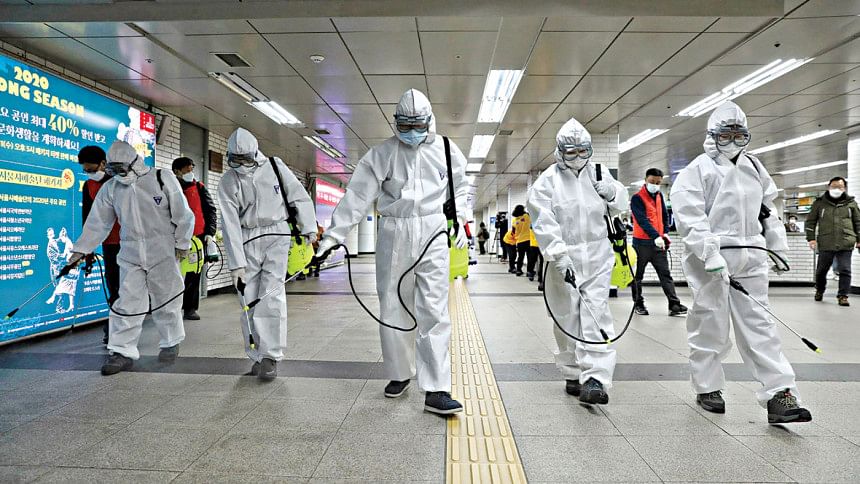A tale of pandemics: when and how do they end?

The end of pandemics in recorded history has seldom been a singular point; it has been a gradually progressing, complicated and chaotic process to say the least.
When we say "end", we do not necessarily mean "eradicate", which entails permanently bringing the global incidence of the said infection to zero. The sole disease we eradicated is smallpox, a bygone menace with a whopping 30% mortality rate. Multiple factors contributed to this exceptional success. The disease's innate nature to produce obvious symptoms led to earlier detection and isolation of cases. The intensive worldwide vaccination campaign by the World Health Organisation (WHO) using a vaccine conferring lifelong protection substantially tilted the scales in our favour. So did the absence of an animal reservoir transmitting the virus.
When the deadliest pandemic in history, the horrendous 1918 influenza pandemic, the misnamed Spanish Flu, swept through the globe, it infected nearly 500 million and killed between 20–50 million. In four separate waves, it ravaged the world till 1920.
As time wore on, the virus mutated to become less lethal and morphed into the relatively benign seasonal flu. As it circulated worldwide and infected nearly one-third of the then global population, people eventually grew immune. And at one point, the virus ran out of enough susceptible hosts that it could infect to create a pandemic-level impact. Restrictions like social distancing, mask-wearing were put in place even back then to decelerate transmission.
The H1N1 influenza A virus, which caused this pandemic, persisted and kept making comebacks; its descendants went on to cause newer pandemics. Of them, the (H1N1) 2009 pandemic, informally labelled as Swine Flu, is one of the recent past. Being a novel flu virus with genetic materials from humans, birds and pigs in unique combinations, it briskly spread because people did not have pre-existing immunity to it. While most infections were mild, they still caused around 100,000–400,000 deaths in 2009.
Winding back centuries, we were outright helpless in the throes of the three plague pandemics; the Black Death of the fourteenth century causing over 50 million deaths in Europe is one spine-chilling history. Caused by a bacterium named Yersinia pestis, it spread by the bite of rat fleas and respiratory droplets of infected humans. While easily treatable with antibiotics today, Congo, Madagascar and Peru continue to be the most endemic countries for the plague.
Experts opine this pandemic will end gradually. While the eradication of the virus is unlikely, its transmission can be controlled to the point it no longer poses a pandemic-level threat and instead, settles down to an endemic disease with sustained, baseline-level transmissions or seasonable outbreaks. It is the stage when the catastrophe being unleashed now becomes far less disruptive. Of course, different countries will reach this milestone at a different pace.
This is the first coronavirus pandemic ever, that too caused by a novel virus. Unlike the influenza viruses causing the previous pandemics of this century, coronaviruses spread more easily, make people stay contagious for longer and cause more serious infections and deaths.
The immune landscape of the world population will be a cardinal determinant. As more people become immune, the collective defence against the virus rises and the virus runs out of susceptible hosts and slows down. The bright side is that we have several available effective vaccines, which will immensely help us in actualising this goal eventually. But without their equitable distribution globally, prospects of optimism are bleak; while countries like the United Kingdom have vaccinated around 60% of their population with at least one dose, most African countries could only vaccinate less than 1% of theirs so far.
We have so much to do in terms of fostering the political goodwill that tackles vaccine nationalism. We also have to innovatively resist the variants that could evade immunity.
Kazi Md Shaimul Reza is a medical student. E-mail: [email protected]

 For all latest news, follow The Daily Star's Google News channel.
For all latest news, follow The Daily Star's Google News channel. 



Comments